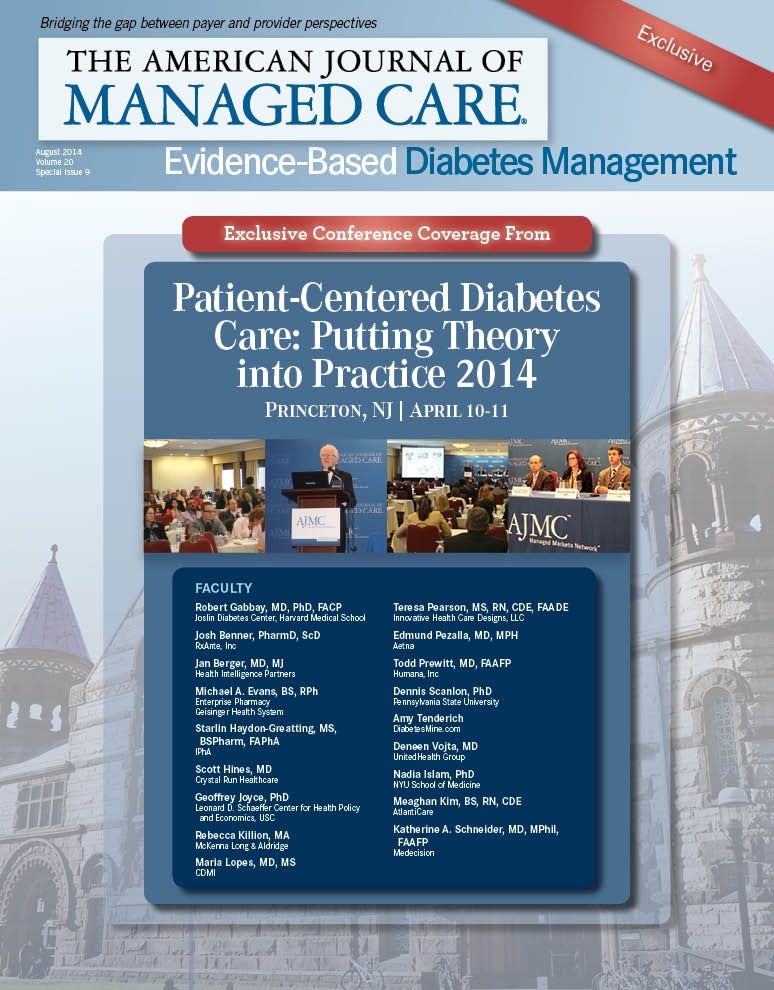- Center on Health Equity & Access
- Clinical
- Health Care Cost
- Health Care Delivery
- Insurance
- Policy
- Technology
- Value-Based Care
What the Data Can-and Can't-Say About Patients
Dr. Vojta emphasized the importance of analyzing existing good patient data to improve care outcomes.
In 1991, when Deneen Vojta, MD, finished medical school and began training at Children’s Hospital of Philadelphia, it wasn’t her job to think about patients once they left her care, even though she often did. Was I right about that rash? Did the ringworm treatment work? Vojta’s questions went unanswered, and she moved on to the next patient.
Now the days of “pay for performance” have arrived, said Vojta, currently senior vice president, business initiatives and clinical affairs, UnitedHealth Group. In her presentation, “HIT to Enable Measurement of Outcomes Between Stakeholders,” she outlined how the ground has shifted for providers accustomed to the old reimbursement models.
Suddenly, there is a list of patients whose follow-up care is someone’s responsibility, and Vojta’s unanswered questions matter, a lot. The days of having nothing more than a sticker to remind someone to get their glycated hemoglobin (A1C) checked are long gone, she said.
Technology, and the arrival of Big Data, have changed everything. But the transition isn’t easy, as many providers are in a transitional period in which some payments are based on new “value-based” models while many more remain based on the fee-for-service model that has governed medicine for decades. Vojta said moving toward more payments based on value-based models—and keeping track of those patients who aren’t in front of the doctor—requires having the right tools, but those tools must be equipped with the right data.
“We’ve spent a lot of time and energy on health information exchanges, and we’re going to exchange data,” Vojta said. In late 2012, UnitedHealthcare acquired the data analytics firm Humetica, which pulls data after processing the language from clinical notes. Vojta described a study of 1000 patients in which the clinical notes were overlaid with a standard electronic health record. Based on those clinical notes, an additional 22% of patients were found to have diabetes—patients who were not captured using standard diabetes algorithms. “Isn’t that scary?” she asked.
Also striking is the profile of the patients who had been missed: 45% more hospital admissions, 33% longer hospital stays, 30% more emergency department visits. And 73% fewer visits to primary care physicians, consequently generating far fewer diagnostic codes to indicate their true condition. “Now, these people would not be on your lists,” Vojta said. If data are going to be exchanged, she said with a note of caution, “We have to make sure that…they are analytically valid.”
“As a payer, we want to make sure that Big Data is really good data. I think over the next couple of years you’re going to start hearing more about good data,” Vojta noted. If an accountable care organization is going to be a bearer of risk, it is essential to properly identify and define its population upfront, so that it can prevent the greatest costs over the next 12 to 24 months.
However, Vojta said, “Good data can also be small data.” Tracking how an individual responds over time can be just as important, especially in diabetes. The proliferation of smartphones and the ability to use them to track personal information will make it possible for patients to take greater control over their own care, she explained.
Vojta offered an example of a person with diabetes who tracked A1C and noted a spike every day at 7 pm, which prompted the question: “What do I do at 6 pm? Well, it turns out I stop every day at Rita’s Water Ice.” This kind of tracking can help change behavior.
EBDM
“’I don’t necessarily need a new regimen,’” Vojta said, describing the hypothetical thought process of such a patient. “I have to decide.”

